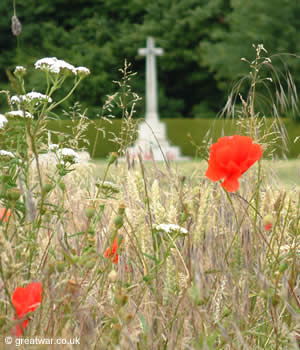
Memorial Day photo by Elizabeth Fraser, U.S. Army. Arlington National Cemetery.
Most Americans no longer remember why the poppy lapel decoration is sold on Memorial Day weekend throughout the world. That is a shame since it’s purpose is to remind us of the suffering of war and the sacrifices made to secure the freedoms and responsibilities guaranteed by our constitution. While their duty was to serve, our duty is to remember.

The Haig poppy first sold in 1919 following World War I. Photo courtesy of www.greatwar.co.uk/article/remembrance-poppy.htm .
The poppy came to be used as a symbol after the slaughter of World War I, also called ‘The Great War.’ The horrors of the European battlefields included years of trench warfare and the use of chemical weapons.
A simple poem, written in 1915 during the First World War by Canadian physician Lieutenant-Colonel John McCrae, called In Flanders Fields was inspired by the loss of his friend. The young Canadian artillery officer named Lieutenant Alexis Helmer was killed during the Second Battle of Ypres. McCrae himself died in 1918 before the end of the war.
The area of Flanders Fields is known for its fields of poppies, also called red field poppies or corn poppies. The annual plant flowers each year between May and August. Its seeds can lie dormant in the ground for many years, but when the ground is disturbed, the seeds germinate.

In parts of the front lines in Belgium and France where the fighting turned the ground into a wasteland, poppy seeds sprouted and grew in the spring of 1915. They were particularly noted around the areas where soldiers lay buried. Poppies also grew in parts of the Turkish battlefields on the Gallipoli peninsula when British Forces arrived at the start of the campaign in April 1915.
Frenchwoman Madame Anna Guérin, known as “The French Poppy Lady,” encouraged people to use the red Flanders poppy as a way of remembering those who had suffered in war. McCrae’s poem inspired an American teacher, Moina Belle Michael, to write a poem in response to In Flanders Fields.
While the origins of the modern-day Memorial Day lie in the “Decoration Day” ceremonies of the Civil War, Michael began to encourage the poppy as a symbol of the suffering of all wars. Poppy pins began to be sold as a way to raise funds to help those impacted by war. In Europe, the funds helped orphaned children and those displaced by war.
In 1920 the American Legion adopted the poppy as a Memorial Day symbol of remembrance of the sacrifices made by America’s armed forces to secure the freedoms we enjoy today.
The poppy effort took root in Great Britain, America, Canada, Australia, New Zealand and much of Europe. To this day, the Flanders Poppy has become our Memorial Day symbol of remembrance.
For more on In Flanders Field see www.arkvalleyvoice.com/memorial-day-is-more-than-paddles-picnics-and-popcorn.







Recent Comments